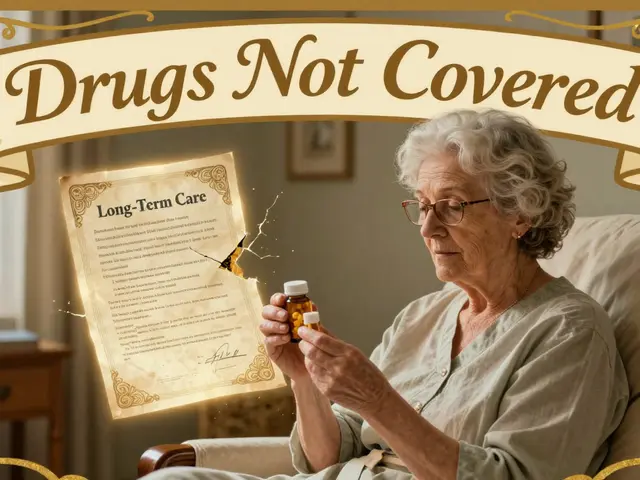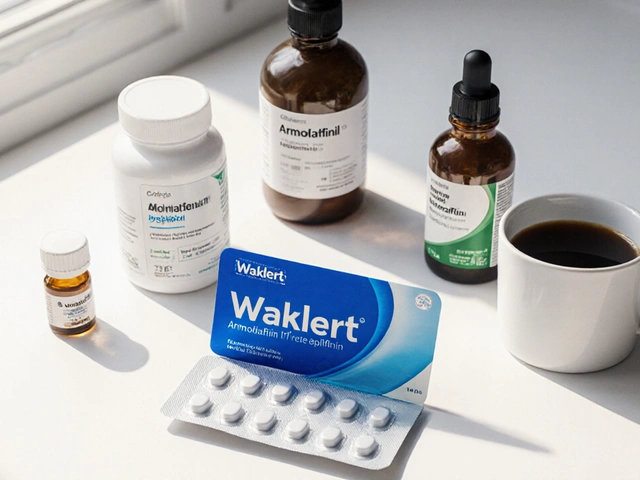Why Post-Marketing Drug Safety Tracking Matters
Drugs get approved based on clinical trials involving a few thousand patients under controlled conditions. But real life is messy. Millions of people take these drugs every day - older adults, pregnant women, people with multiple health conditions - groups often left out of initial testing. That’s where post-marketing surveillance comes in. It’s not a backup plan. It’s the frontline defense against hidden dangers that only show up after a drug hits the market.
Think of it this way: a drug might seem safe in a trial of 3,000 people. But when 500,000 people start taking it, a rare side effect - maybe liver damage in patients over 70 - suddenly pops up. Without tracking, that could mean hundreds of avoidable hospitalizations. The FDA’s FAERS (the FDA Adverse Event Reporting System, a database holding over 30 million reports from doctors, patients, and drug makers) catches these signals. In 2022, 63% of all drug safety actions started with a report from someone on the ground - not a lab, not a trial.
How the FDA Tracks Drug Safety After Approval
The U.S. Food and Drug Administration doesn’t just sit back after approving a drug. It runs two major systems: FAERS and Sentinel. FAERS is passive - it collects reports. Sentinel is active - it digs into real-world data from insurance claims and electronic health records of over 300 million Americans.
Here’s how it works in practice:
- A doctor notices a pattern: five patients on a new diabetes drug developed pancreatitis. They file a report to FAERS.
- Within weeks, FDA analysts spot a spike in similar reports. They cross-check with Sentinel data to see if this is happening more often than expected.
- If the signal holds, a team of epidemiologists, pharmacologists, and clinicians reviews lab results, dosages, and patient histories from EHRs.
- By month six, they confirm the risk. The FDA issues a Drug Safety Communication, updates the label, and may require a Risk Evaluation and Mitigation Strategy (REMS) to limit use.
Between 2018 and 2022, 87% of safety actions led to label changes. Only 1% led to withdrawal. That’s the goal - not to pull drugs, but to make them safer to use.
The Global Patchwork of Safety Systems
The U.S. isn’t alone. The UK’s Yellow Card scheme (a voluntary reporting system that collected 76,423 adverse reaction reports in 2022) lets anyone - patients, pharmacists, nurses - report side effects online or by phone. Canada’s Canada Vigilance Program (received nearly 29,000 reports in 2022) works similarly. In the EU, EudraVigilance (the centralized database for all member states, soon to be powered by AI for faster signal detection) links national reports into one system.
But here’s the catch: not all countries have the same infrastructure. In low-resource settings, reporting is patchy. That’s why the WHO is pushing a global data-sharing network aiming for 100 countries by 2027. Without global coordination, dangerous signals can slip through the cracks.
What Companies Must Do to Stay Compliant
Drug makers don’t just hand over a product and walk away. Once a drug is approved, they’re legally required to run post-marketing studies - often called Phase IV trials. These aren’t optional. The FDA can demand them for drugs with higher risks, like cancer treatments or psychiatric medications.
Between 2015 and 2022, 72% of these mandated studies ran late. Why? Two big reasons: patient recruitment is slow, and data from different hospitals doesn’t talk to each other. One company spent 18 months just getting access to EHR systems across five states.
Best practice? Build a centralized tracking system. Assign one person - a pharmacovigilance specialist - for every $500 million in annual sales. Use automated alerts to flag missed deadlines or missing data. Track your own Post-Marketing Study Timeliness Index (PMSTI) (the percentage of required studies completed on time). If your PMSTI is below 80%, you’re at risk of regulatory action.

What’s New in Drug Safety Tech
Old methods are getting a boost. The FDA’s Sentinel System (now expanded to include 24 million linked EHR and insurance records) is getting smarter. In 2023, they started using machine learning to sift through unstructured doctor’s notes in EHRs - things like “patient seemed confused after dose” or “lab values off the charts.”
Pilot programs with AI tools like those from Lifebit AI showed a 42% improvement in spotting real signals. But here’s the downside: false alarms went up 23%. That’s why human experts still review every flagged case. AI doesn’t replace doctors - it helps them work faster.
By 2026, the FDA’s Sentinel Common Data Model Plus (SCDM+) (a new framework integrating genomic data with clinical records for 50 million patients) will let researchers see if a genetic variant makes someone more likely to have a bad reaction. That’s personalized safety monitoring - not science fiction, but real, rolling out now.
How to Stay Ahead of the Curve
If you’re managing drug safety for a company, here’s what you need to do today:
- Set up automated alerts for FAERS and Yellow Card submissions related to your product.
- Assign a dedicated pharmacovigilance team - don’t outsource this to your legal department.
- Track every mandated post-marketing study with a clear timeline and milestone tracker.
- Use EHR data where possible. If your hospital partners won’t share, push for it - it’s your legal responsibility.
- Attend FDA public meetings. They announce new requirements there before they’re published.
Don’t wait for a crisis. The most successful companies don’t just react - they predict. If you see a slow rise in reports from a specific age group or region, investigate before the FDA does.
What Happens When You Miss a Deadline
Missing a required post-marketing study isn’t just a paperwork error. It’s a regulatory violation. The FDA can issue a warning letter, block new product applications, or even withdraw approval. In 2021, a major oncology drug manufacturer got fined $12 million after failing to submit three overdue safety studies.
But it’s not just about fines. It’s about trust. If doctors and patients think you’re not monitoring safety, they’ll stop using your drug. That’s the real cost.

Future of Drug Safety: What’s Coming
By 2025, the EU will launch its AI-powered EudraVigilance upgrade. In 2026, the FDA will start using genomic data to predict who’s at risk. By 2027, global data sharing could mean a side effect spotted in Brazil triggers an alert in Japan within hours.
One thing won’t change: people still matter most. Technology helps, but it’s the nurse who notices a patient’s rash, the pharmacist who questions a new interaction, the family member who calls with a concern - that’s where safety begins.
Frequently Asked Questions
What’s the difference between FAERS and Sentinel?
FAERS is a database of voluntary reports from doctors, patients, and drug companies. Sentinel is an active system that analyzes real-world health data from insurance claims and electronic records of millions of patients. FAERS catches what people report. Sentinel finds patterns that people might not notice.
How long do drug companies have to complete post-marketing studies?
The FDA typically gives 3 years, but in practice, studies take an average of 5.3 years to finish. Delays happen because recruiting patients, getting data access, and managing multiple sites is slow. Companies that use distributed data networks and automated tracking cut initiation time from 14 months to under 9 months.
Can patients report adverse drug reactions?
Yes. In the U.S., patients can report directly to FAERS through the FDA’s website. In the UK, anyone can file a Yellow Card. These reports are critical - they’ve led to over 60% of safety actions in recent years. Your report could prevent someone else from being harmed.
What’s a REMS, and why does it matter?
REMS stands for Risk Evaluation and Mitigation Strategy. It’s a set of requirements the FDA can impose to manage serious risks. This could mean special training for prescribers, mandatory patient monitoring, or restricted distribution. REMS isn’t punishment - it’s a way to keep a useful drug available while reducing danger.
Are newer drugs less safe than older ones?
Not necessarily. But they’re less understood. Pre-approval trials are too small to catch rare side effects. That’s why post-marketing studies are essential. A drug approved in 2020 might have unknown risks that only show up after 200,000 people use it. Older drugs have had decades of real-world use - their risks are better mapped.
How do I know if a drug I’m taking has a safety warning?
Check the FDA’s Drug Safety Communications page. It’s updated weekly. Your pharmacist should also alert you if a label changes. If you’re on a high-risk drug - like an anticoagulant or psychiatric medication - sign up for email alerts from the FDA or your country’s health authority.
Next Steps for Healthcare Professionals and Companies
If you’re a clinician: Always report unusual reactions. Even if you think it’s rare, even if you’re not sure - report it. One report might be noise. Ten reports from different places? That’s a signal.
If you’re in pharma: Don’t treat post-marketing studies as a box to check. Build a culture of safety. Make pharmacovigilance part of your R&D, not just your compliance team. Use real-time dashboards. Train your sales reps to listen, not just sell. The best drug companies don’t just make products - they protect people.
Drug safety isn’t about perfection. It’s about vigilance. And that’s a job that never ends.







edgar popa
November 14, 2025 AT 00:30Eve Miller
November 15, 2025 AT 13:27Chrisna Bronkhorst
November 15, 2025 AT 16:26Amie Wilde
November 17, 2025 AT 11:31Gary Hattis
November 19, 2025 AT 01:34Esperanza Decor
November 20, 2025 AT 14:40Deepa Lakshminarasimhan
November 21, 2025 AT 14:49Erica Cruz
November 22, 2025 AT 12:26Johnson Abraham
November 23, 2025 AT 23:03Shante Ajadeen
November 24, 2025 AT 01:57